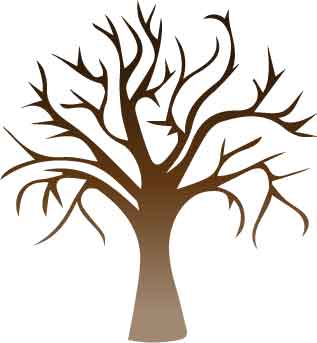Memorial Park’s Oak Savanna restoration
Biodiversity plan for campus brings pollenators to the Driftless Area.

Elizabeth Kaiser graphic.
Memorial park on campus has experienced dramatic change since the Wisconsin Driftless area was settled in the 1800s. According to Victoria Nuzzo in a 1986 study of Midwestern oak savannas entitled “Extent and status of Midwest oak savanna: Pre-settlement and 1985” published in the Natural Areas Journal, “Oak savannas currently cover less than 0.1 percent of their former extent,” Nuzzo wrote.
An oak savanna resembles an open prairie blended with an oak forest where oak trees of all ages are spread out, leaving room for wild flowers to grow. The variety of plants allows for greater biodiversity for plants and animals. An example of this can be found at the Pleasant Valley Conservancy which has a restored and preserved oak savanna. The biodiversity there consists of roughly 400 unique plants.
“The canopy cover is not complete, so you have a habitat that has 30 percent to 40 percent denser species diversity,” Pleasant Valley Conservancy specialist Tom Brock said.
However, many oak savannas in the Midwest, and their biodiversity were lost due to a sequence of events starting immediately after Europeans settled in the area.
“At the time, Europeans in the early 1800s easily converted oak savannas and prairies into agricultural land,” associate professor of geography Dr. Evan Larson said.
The conversion of natural to arable land didn’t solely wipe out the oak savanna habitats, but the change meant that the people living on this land had new animals living in the area and large-scale agricultural practices.
“Europeans had grazing animals [which ate grass] and they [the European farmers] put out fires,” Larson said.
The reduction of grasses and habitually putting out wildfires is what cemented the loss of oak savannas in the Midwest.
“The problem on campus and in Southern Wisconsin is that oak trees need fire. There’s no baby oaks [around campus] and fire opens up room for competition. Also, all the underbrush grew up like in Memorial Park,” assistant professor and program coordinator of reclamation, environment and conservation Dr. Yari Johnson said.
There used to be numerous larger oak trees in Memorial Park and across the Midwest. They had denser canopies which led to less sun reaching the flowers underneath. The grasses and plants underneath weren’t being burned away to make room for the flowers, so the grasses that could reach the sun took over.
“These [wild fires] would be burning every few years and would not be exceptionally intense or severe fires because they’re mostly burning off grasses which is a very flashy fuel. So, a fire would run through an area. So, that process of fires working through the system is what maintained that oak savanna structure,” Larson said.
Like in the Pleasant Valley Conservancy, oak savannas can be restored. Plans to restore the oak savanna at Memorial Park have been discussed before, but cost and labor were always a large impediment.
The tornado that touched down in Platteville on June 16th, 2014 devastated the area, uprooting several trees in Memorial Park.
“It [the tornado] took out a lot of mature trees, it opened the canopy and it primed that area to transition into a more open condition,” Larson said.
Debate about whether to restore the oak savanna at Memorial Park changed into how to best restore it while considering invasive, overgrown brush.
“There has been some invasive species management [in Memorial Park]. I have students that have been working in the oak savanna this semester, and it is filling with brambles and prickly ash and honey suckle and a whole host of invasive or noxious or frustrating species,” Larson said.
In the summer of 2017 the office of sustainability along with Dr. Yari Johnson conducted a trial run of using a small herd of rented goats to consume the brush in the oak savanna. The goats were fenced into a section of Memorial Park (adjacent to the Greenwood Cemetery) and overseen by local farmers and students.
“There was a lot of thistle after the tornado and the goats ate almost everything. The honeysuckle was taller than the goats so they couldn’t reach. It was an experiment that was very successful,” Johnson said.
The goat experiment is planned to expand. Until then, the plan for Memorial Park is to perform another prescribed burn in the spring then lay out a seed mixture of flowers and other plants.
“We’re doing one third of the oak savanna [in Memorial Park], this part has a lot less honeysuckle. In a year or two we’ll have an oak savanna that’ll look like Wisconsin at the time of settlement. Eventually we’ll get all of it restored,” Johnson said.
Another project planned after Memorial Park is restored to a pre-1800s state is to help restore the Platt Mound to its original prairie status.
“Next is the mound with the ‘M’, which used to be a prairie. There’s a lot of talk of making the lighting of the ‘M’ a prescribed burning of the grass around the ‘M’. Without fire it’ll become a woodland with less biodiversity,” Johnson said.
These projects are limited by available grant money and student help. The projects are partly funded by the Green Campus Fund grant which gives these projects $2,000 a year.
These projects are practical applications of conservation and reclamation.
“We’re trying to teach students about the oak savanna. Also, we wnat them to learn practical skills and how to manage land,” Johnson said.
Besides sustainability and education, a restored oak savanna on campus would also be an achievement for the campus community. This restoration project already involves the reclamation department, reclamation club, office of sustainability, students of related majors and community members.



